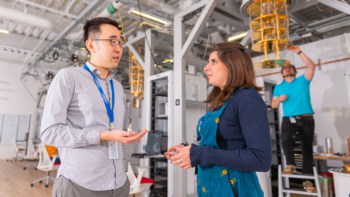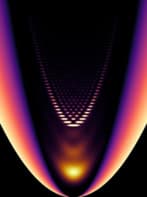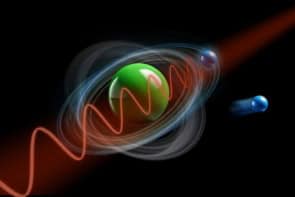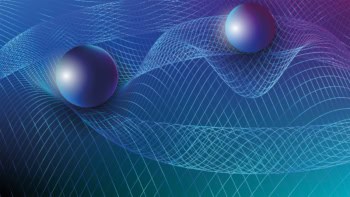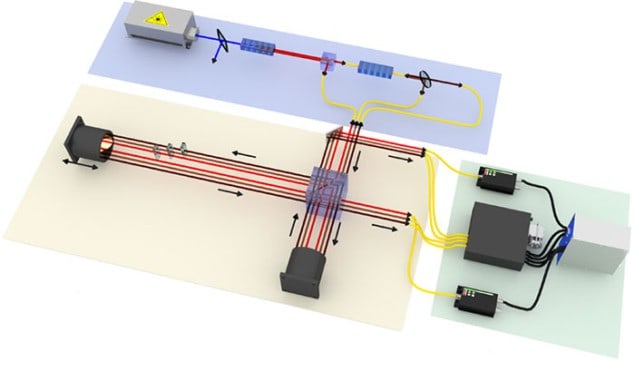
Quantum interference involving three photons has been measured by two independent teams of physicists. Seeing the effect requires the ability to deliver three indistinguishable photons to the same place at the same time and also to ensure that much more common single-photon and two-photon interference effects are eliminated from the measurements. As well as providing deep insights into the fundamentals of quantum mechanics, three-photon interference could also be used in quantum cryptography and quantum simulators.
When a stream of single photons travel through a double slit they will build up an interference pattern on a detector behind the slits – an example of single-photon interference. An example of two-photon interference is the Hong–Ou–Mandel (HOM) effect, which involves two photons entering a beam splitter with two exit ports. If the photons are identical and arrive at the same time, they will interfere and will always exit the same port of beam splitter. If these two criteria are not met, there is a 50% chance of each photon exiting either port.
Trio in a tritter
Now, a three-photon version of the HOM effect has been created by team led by Ian Walmsley of the University of Oxford in the UK. Their experiment begins with the creation of three independent photons in three different sources. These are sent to a fibre-optic based interferometer called a tritter, which has three inputs and three outputs. The team looked at the probability that all three photons exited the same output portal. To isolate the effects of single- and two-photon interference, they control something called the “triad phase” of the three photons. This is non-zero only if the photons are partially distinguishable – but not fully distinguishable. They were able to show that the probability for three photons emerging from one port varied with the triad phase, just as expected for three-photon interference. And crucially, single- and two-photon effects remained constant.
Meanwhile at the University of Waterloo in Canada, Thomas Jennewein and colleagues did their experiment using a photon source that emits three photons in an entangled quantum state. The trios are created by firing a single photon into a series of nonlinear crystals, each of which is able to convert one photon into a pair of entangled photons. Very occasionally an entangled trio emerges and is then sent into an interferometer that has two output ports. By changing the relative phases of the three photons, Jennewein’s team saw the probability of three photons emerging from one port vary as expected from three-photon interference. The probability of two photons emerging from the same port remained the same, however, suggesting that the team was observing genuine three-photon interference.
One possible application of the three-photon interference created in the experiments is three-photon sharing. This involves a secret quantum key that is shared by three parties, but can only be used by all three parties together. Three-photon interferometry could find use in quantum-sensing applications and also in a quantum-computing technique called boson sampling.
The measurements are described in two papers in Physical Review Letters.
